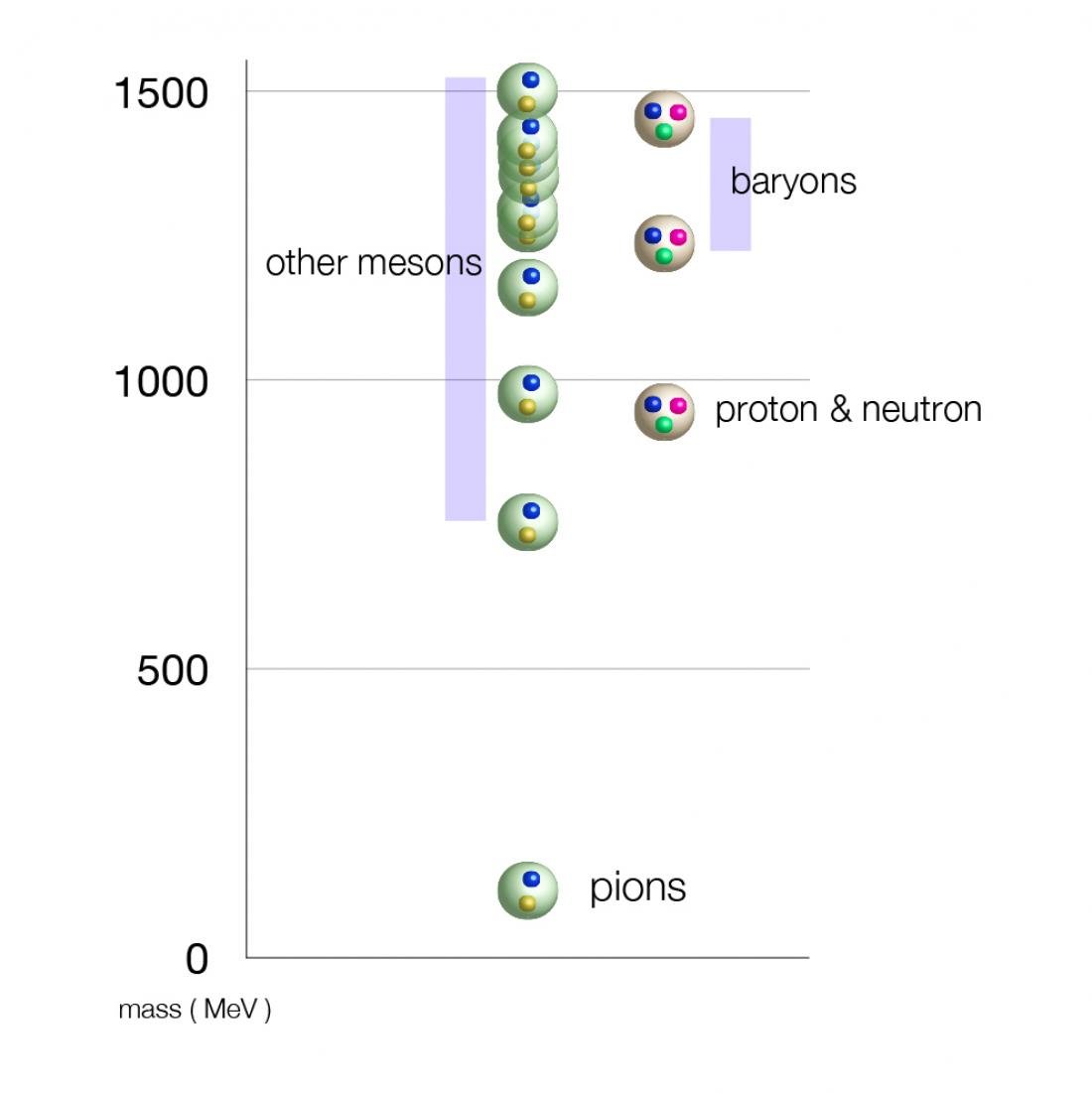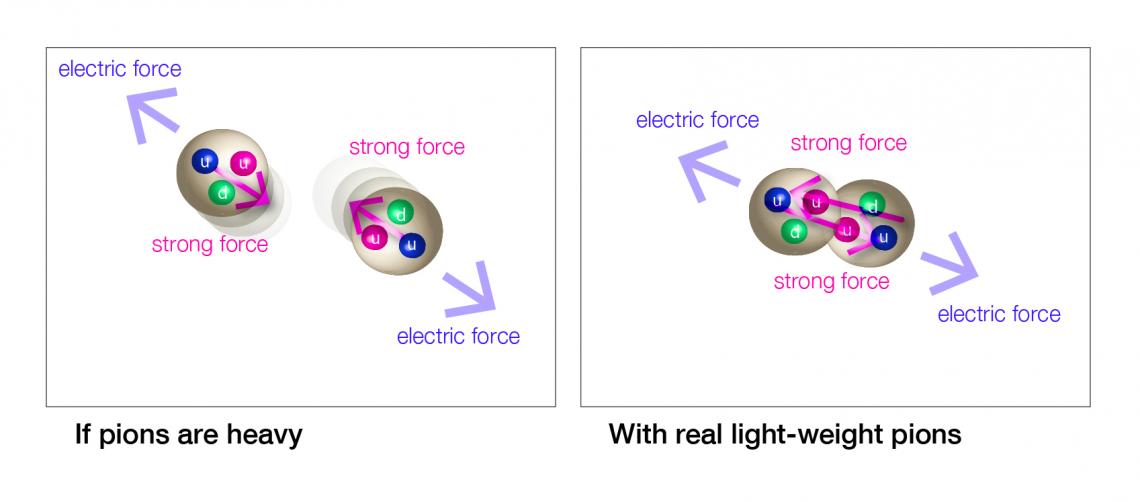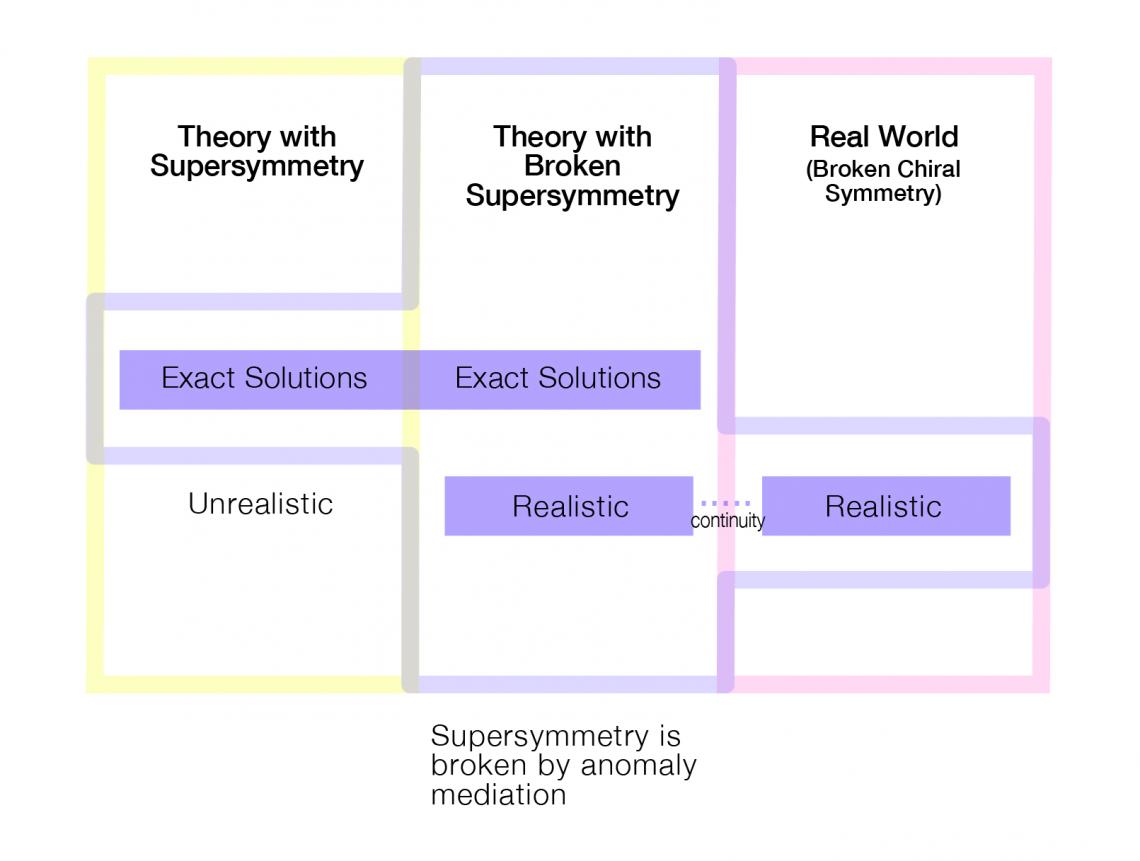Compared with the mass spectrum of mesons on the left side, and protons, neutrons and baryons on the right side, it is clear pions are very light-weight.
Using only a pen and paper, a theoretical physicist has proved a decades-old claim that a strong force called Quantum Chromo Dynamics (QCD) leads to light-weight pions, reports a new study published on June 23 in Physical Review Letters.
The strong force is responsible for many things in our Universe, from making the Sun shine, to keeping quarks inside protons. This is important because it makes sure that the protons and neutrons bind to form nuclei of every atom that exists. But there is still a lot of mystery surrounding the strong force. Einstein’s relation E=mc2 means a strong force leads to more energy, and more energy means a heavier mass. But subatomic particles called pions are very light weight. Otherwise nuclei would not bind, there would be no atoms other than hydrogen, and we wouldn’t exist.
Why?
When quarks were discovered experimentally by striking them out of a proton with energetic electrons, scientists came up with the “explanation” that a property of the strong force called confinement was imprisoning quarks, preventing them from being observed directly. However, the mystery remained that no one could give theoretical proof that derived confinement from QCD.
Late Nobel Laureate Yoichiro Nambu proposed a concept called “spontaneous symmetry breaking” was responsible for creating essentially massless particles equivalent to pions. That is why these pions are so light in weight (in the real world, small intrinsic mass of quarks does not create completely massless particles). But yet again, no one could demonstrate that the theory of the strong force, QCD, realizes the proposed spontaneous symmetry breaking.
So Kavli Institute for the Physics and Mathematics of the Universe (Kavli IPMU) Principal Investigator Hitoshi Murayama solved this problem using a version of the theory with a mathematically elegant enhancement called supersymmetry. Yet the real world does not have supersymmetry. Murayama approached the real world using a specific way of breaking supersymmetry called anomaly mediation that he proposed back in 1998.
In doing so, Murayama managed to show that QCD indeed leads to very light-weight pions, something that had been suggested by numerical simulations with supercomputers, but technically impossible with massless quarks to definitively answer the question.
“I always hoped to understand how the strong nuclear force works so that we can exist. I’m very excited that I managed to prove Nambu’s theory from QCD that has been so difficult for decades. This is a part of my long quest why we exist. Physics may not be too far away from answering this millennia-long question,” said Murayama.
The study may open up new avenues to the study dynamics of non-supersymmetric gauge theories.
The left side shows if pions were heavy, they would not be able to mediate a strong force between two protons, and as a result the protons would move away from one another. The right side shows how light-weight pions in the real world are able to bind two protons together by mediating a strong force between them. In other words, if pions were not light-weight, protons and neutrons would not be able to bind together to form nuclei, and the only atoms in the Universe would be single proton hydrogen atoms.
A summary of this study. (Leftmost column) In 1994, Nathan Seiberg and Edward Witten proposed a model with extended supersymmetry to show confinement was a consequence of Quantum Chromo Dynamics (QCD). (Rightmost column) In 1961, Yoichiro Nambu proposed a concept of QCD called the chiral symmetry breaking, which provided a real world representation of the strong force. (Centre column) In 2021, Hitoshi Murayama used anomaly mediation, which he and collaborators proposed in 1998, to break supersymmetry, allowing him to connect the Seiberg and Witten model to the real world that Nambu had proposed. As a result, Murayama was able to find theoretical proof of Nambu's prediction that pions are light because chiral symmetry breaking occurs in QCD.





